Milwaukee Road history
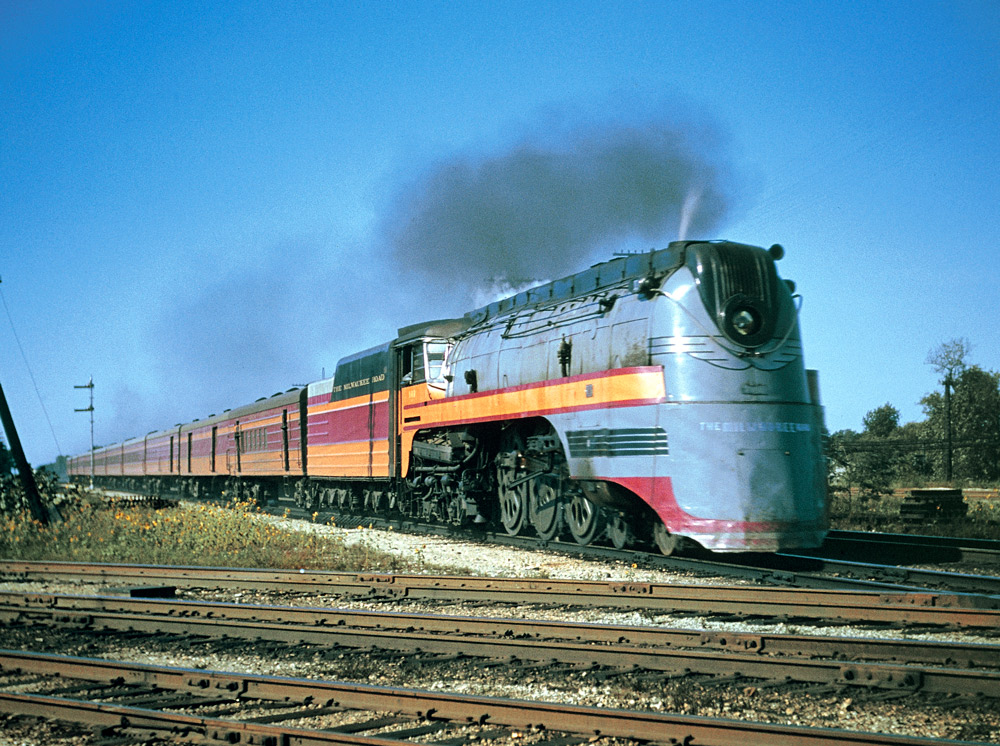
Milwaukee Road history begins with the Milwaukee & Waukesha Rail Road, which was chartered in 1847. Even before it laid its first rails in 1850, its name was changed to the Milwaukee & Mississippi. In 1851 it reached Waukesha, Wis., 20 miles west of Milwaukee. Its rails reached Madison in 1854 and Prairie du Chien, on the Mississippi River, in 1857.
In 1858 the La Crosse & Milwaukee Rail Road was completed between the cities of its name, forming a second route across Wisconsin between Lake Michigan and the Mississippi River. It was reorganized in 1863 as the Milwaukee & St. Paul, and in 1867 it purchased the Milwaukee & Prairie du Chien, successor to the Milwaukee & Mississippi.
Milwaukee Road reaches Chicago
The Milwaukee & St. Paul acquired in 1872 the St. Paul & Chicago, which had just completed a route down the west bank of the Mississippi from St. Paul to La Crescent, opposite La Crosse. In 1873 the M&StP completed a line from Milwaukee south to Chicago and a year later added “Chicago” to its name.
In the next few years the road built or bought lines from Racine, Wis., to Moline, Ill.; from Chicago to Savanna, Ill., and two lines west across southern Minnesota. The road reached Council Bluffs, Iowa, across the Missouri River from Omaha, in 1882, and reached Kansas City in 1887. In 1893 the CM&StP acquired the Milwaukee & Northern, which reached from Milwaukee into Michigan’s upper peninsula.
In 1900 the Chicago, Milwaukee & St. Paul was considered one of the most prosperous, progressive, and enterprising railroads in the U.S. Its lines reached from Chicago to Minneapolis, Omaha, and Kansas City. Secondary lines and branches covered most of the area between the Omaha and Minneapolis lines in Wisconsin, Iowa, and Minnesota. Lines covered much of eastern South Dakota and reached the Missouri River at three places in that state: Running Water, Chamberlain, and Evarts. Except for the last few miles into Kansas City and operation over Union Pacific rails from Council Bluffs to Omaha, the Missouri River formed the western boundary of the CM&StP. (“Milwaukee Road” as a name or nickname did not come into use until the late 1920s; “St. Paul Road” was sometimes used as a nickname, but the railroad’s advertising used the full name).
Pacific extension: A fatal error in Milwaukee Road history
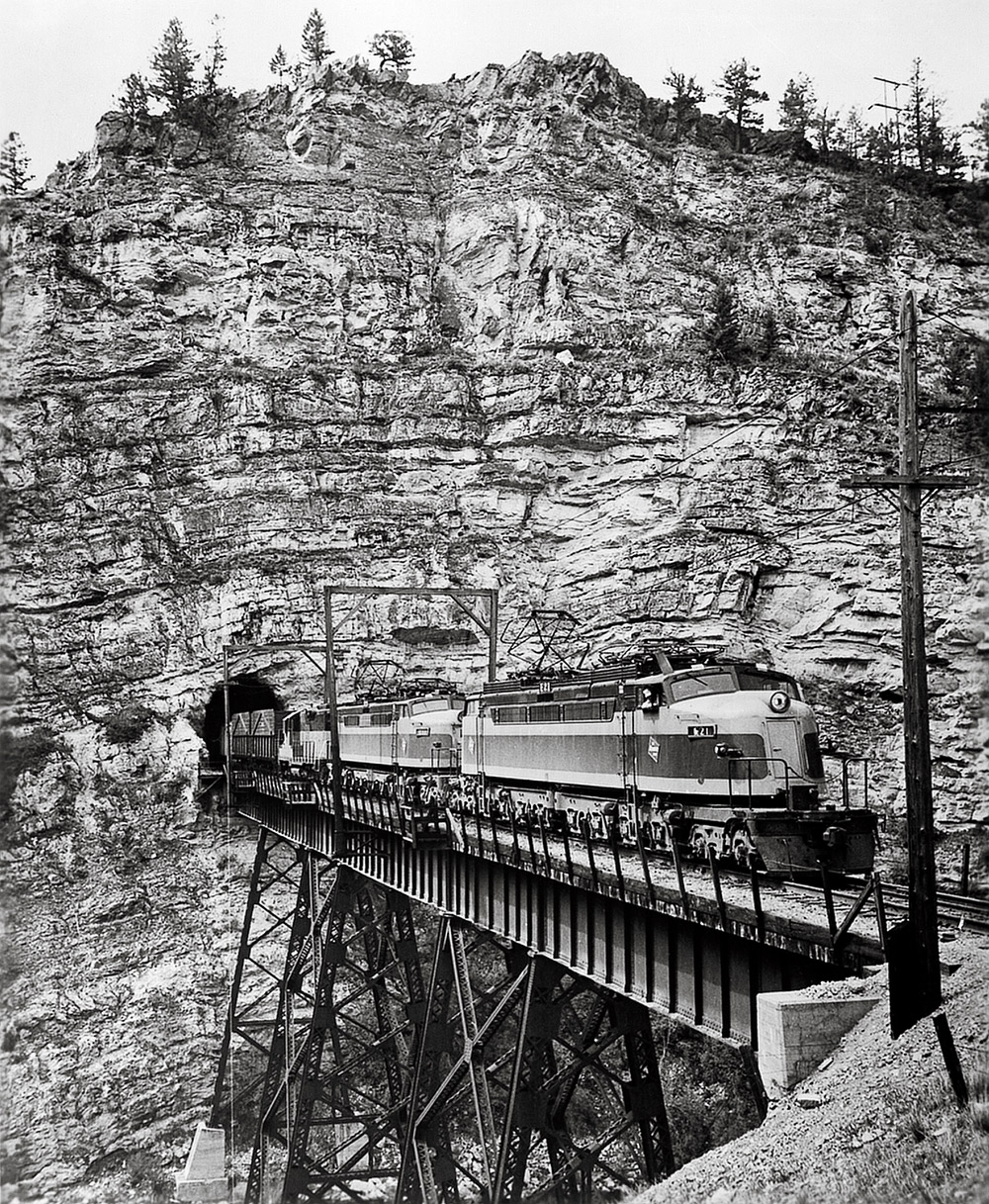
The battle over control of the Northern Pacific and the Burlington in 1901 made the Milwaukee Road aware that without its own route to the Pacific it would be at its competitors’ mercy. At the same time the Milwaukee Road was experiencing a change in its traffic from dominance by wheat to a more balanced mix of agricultural and industrial products. Arguments against extension westward included the possibility of the construction of the Panama Canal and the presence of strong competing railroads: Union Pacific, Northern Pacific, and Great Northern. Arguments for the extension banked heavily on the growth of traffic to and from the Pacific Northwest.
In 1901 the president of the Milwaukee Road dispatched an engineer west to estimate the cost of duplicating Northern Pacific’s line. His figure was $45 million. Such an expenditure required considerable thought; not until November 1905 did Milwaukee’s board of directors authorize construction of a line west to Tacoma and Seattle.
In 1905 and ’06 the Milwaukee Road incorporated subsidiaries in South Dakota, Montana, Idaho, and Washington. The Washington company was renamed the Chicago, Milwaukee & Puget Sound Railway, and it took over the other three companies in 1908. It was absorbed by the CM&StP in 1912.
The extension began with a bridge across the Missouri River at Mobridge, 3 miles upstream from Evarts, S.D. Roadbed and rails pushed out from several points into unpopulated territory. The work went quickly, and the road was open to Butte, Mont., in August 1908.
The route from Harlowton to Lombard was that of the Montana Railroad. Its mortgage was held by James J. Hill and the Great Northern Railway. Taking advantage of Hill’s absence on a trip to England, the Milwaukee Road advanced the owner the funds required to pay off the mortgage and bought the railroad through the CM&PS.
Construction was also under way eastward from Seattle. The last spike on the line was driven near Garrison, Mont., on May 14, 1909. Local passenger service was established later that year, through service in May 1911.
In 1912 the Milwaukee decided to electrify much of the new line. The mountainous terrain, the possibility of hydroelectric power, the difficulties associated with operating steam locomotives through tunnels and in severe winter weather, and an increase in traffic all suggested electrification. The section from Harlowton, Mont., to Avery, Idaho, was completely turned over to electric operation in late 1916. Early in 1917 the road decided to electrify the portion of the line from Othello, Wash., to Tacoma. Electric operation on the Coast Division began in 1919, and catenary reached Seattle in 1927. The electrification cost $23 million, but in 1925 the road reported that the savings over steam operation had already amounted to more than half that sum.
Financial difficulty
The cost of the Pacific Extension, $234 million, greatly exceeded estimates. Traffic on the new route came nowhere near the forecasts: The boom in the Pacific Northwest ended about 1910, and the Panama Canal opened in 1914. The debt incurred in building the extension remained.
On top of that, in 1921 the Milwaukee leased the Chicago, Terre Haute & Southeastern and in 1922 acquired the Chicago, Milwaukee & Gary to gain access to the coalfields of southern Indiana. Both those roads were heavily in debt. The Milwaukee Road entered bankruptcy in 1925.
The company emerged from reorganization in 1928 as the Chicago, Milwaukee, St. Paul & Pacific Railroad. On June 29, 1935, it declared bankruptcy again. Despite the financial problems, the late 1930s and early 1940s were interesting times for Milwaukee Road. In May 1935 it introduced the Hiawatha, a fast steam-powered streamliner between Chicago and the Twin Cities. It was an immediate and overwhelming success. In the next few years the train was re-equipped, service was doubled, and Hiawathas appeared on other routes. The cars of the Hiawatha, like most of Milwaukee Road’s freight and passenger cars and many of its steam locomotives, were products of the road’s shops in Milwaukee.
The postwar boom brought the Milwaukee Road out of bankruptcy, and it remained reasonably healthy into the 1960s. In 1955 Union Pacific moved its passenger trains from the Chicago & North Western to Milwaukee’s Chicago–Council Bluffs route, and in the early 1960s Milwaukee Road modernized its Chicago suburban service. The road discussed merger with the C&NW and with the Rock Island. As a condition of the creation of Burlington Northern the Milwaukee was granted trackage rights on BN into Portland, Ore.; and as a condition of Louisville & Nashville’s merger of the Monon, it received trackage rights over the former Monon line from Bedford, Ind., to Louisville, Ky.
The longest branch line
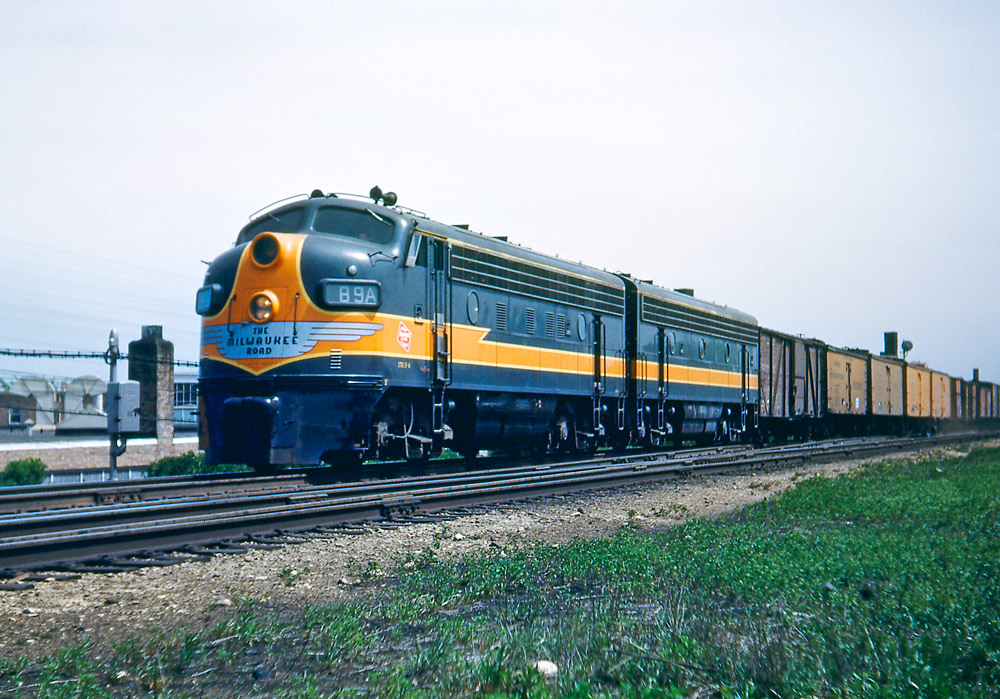
Through this period of Milwaukee Road history there was little change in the railroad’s lines west of the Missouri River. North America’s longest electrification continued unchanged — in the same two disconnected portions, with steam and later diesel power hauling trains over the 212 miles of nonelectrified track between Avery, Idaho, and Othello, Wash. With dieselization after World War II, it appeared that the electrification would be dismantled, but the road purchased 12 electric locomotives that had been built by General Electric for the Soviet Union and embargoed because of international tensions. Milwaukee Road regauged the “Little Joes” (nicknamed for Joseph Stalin) from 5 feet to standard and equipped two with steam generators for passenger service. They went into service between Harlowton and Avery.
The electrification soldiered on for another two decades, but diesels showed up under the wires more and more often, sometimes running in multiple with the electrics. By the early 1970s passenger service had long since been discontinued, many of the original electric locomotives had been scrapped, and much of the hardware of the electrification needed replacement. Traffic on the line was insufficient to justify rebuilding the electric plant — and the road did not have the funds to do so anyway. The Milwaukee de-energized the catenary over the Coast Division in 1972 and ended electric operation on the Rocky Mountain Division on June 16, 1974.
Financial difficulties again
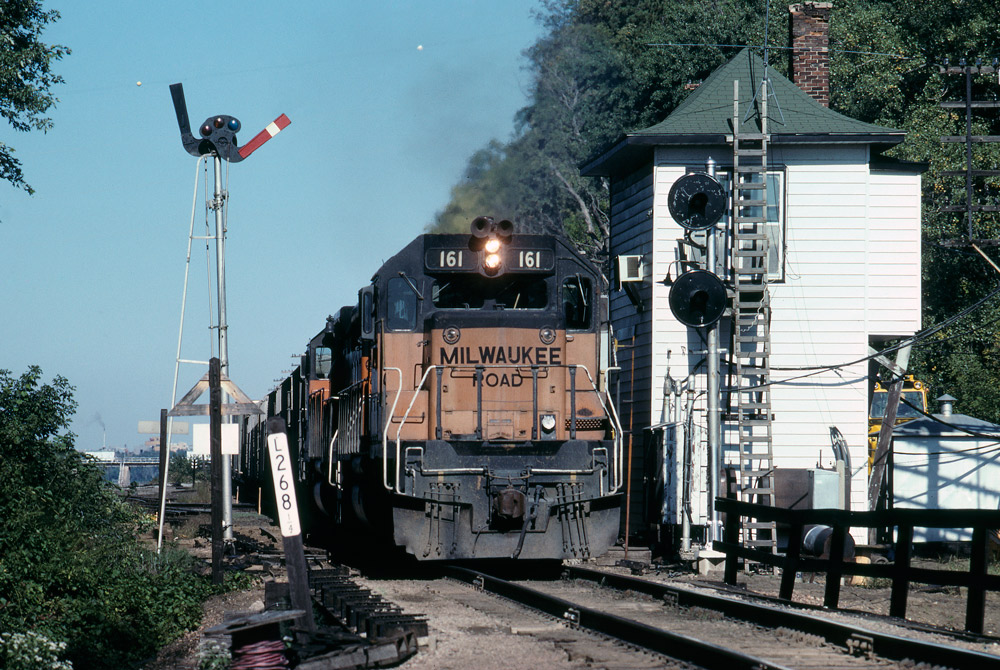
Except for its double-track Chicago–Twin Cities main line, the Milwaukee Road was secondary railroading. It was not the first railroad you thought of between, say, Chicago and Kansas City or St. Paul and Seattle. Traffic on the Pacific Extension barely supported one freight train a day each way. The lightly constructed branch lines that spider-webbed across Wisconsin, Iowa, Minnesota, and South Dakota carried mostly products of agriculture.
Over the decades, the road’s management had made too many wrong decisions: building the Pacific Extension, not electrifying between the two electrified portions, purchasing the line into Indiana, and in the 1960s choosing Flexivans (containers with separate wheels/bogies that required special flatcars) instead of conventional piggyback trailers.
After several money-losing years in the early 1970s, the Milwaukee voluntarily entered reorganization once again on December 19, 1977. The major result of the 1977 reorganization was the amputation of everything west of Miles City, Mont., to concentrate on what became known as the “Milwaukee II” system linking Chicago, Kansas City, Minneapolis-St. Paul, Duluth (on Burlington Northern rails from St. Paul), and Louisville (but no longer Omaha).
By 1983 the Milwaukee’s system consisted of the Chicago–Twin Cities main line; Chicago–Savanna–Kansas City; Chicago–Louisville (almost entirely on Conrail and Seaboard System rails), Milwaukee–Green Bay; New Lisbon–Tomahawk, Wis.; Savanna–La Crosse, along the west bank of the Mississippi; Marquette to Sheldon, Iowa, and Jackson, Minn.; Austin, Minn.–St. Paul; and St. Paul–Ortonville, Minn., plus a few branches.
Three roads vied for what remained of the Milwaukee: the Chicago & North Western, financially none too solid itself; Canadian National subsidiary Grand Trunk Western, with an eye toward creating a route between eastern and western Canada south of the Great Lakes; and Canadian Pacific subsidiary Soo Line.
Soo Line, though not high bidder in the “auction,” was awarded the Milwaukee Road in February 1985 and merged it on January 1, 1986. Soo briefly tried operating its light-density lines in Michigan and Wisconsin with different work rules as its Lake States Transportation Division, but in October 1987 sold those lines, plus the former Milwaukee Road’s Milwaukee–Green Bay and New Lisbon–Tomahawk lines, to the new carrier Wisconsin Central Ltd., in many ways recreating the pre-1909 Wisconsin Central Railway.
Soo consolidated its Chicago–Twin Cities operations on the former Milwaukee Road main line and acquired trackage rights on Chessie System from Chicago to Detroit, where it made a connection with its parent CP Rail.






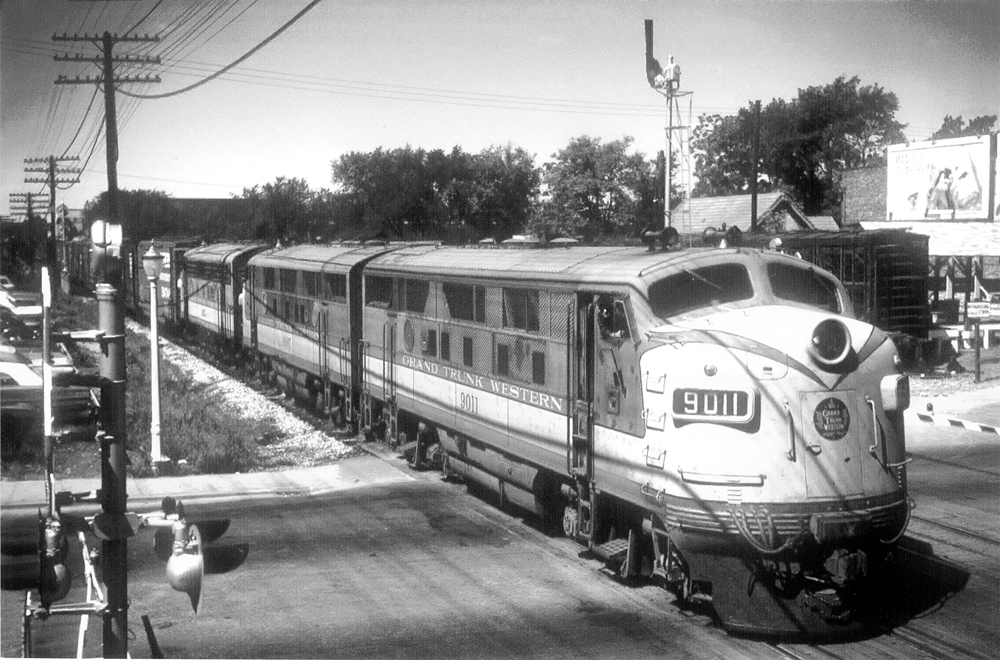
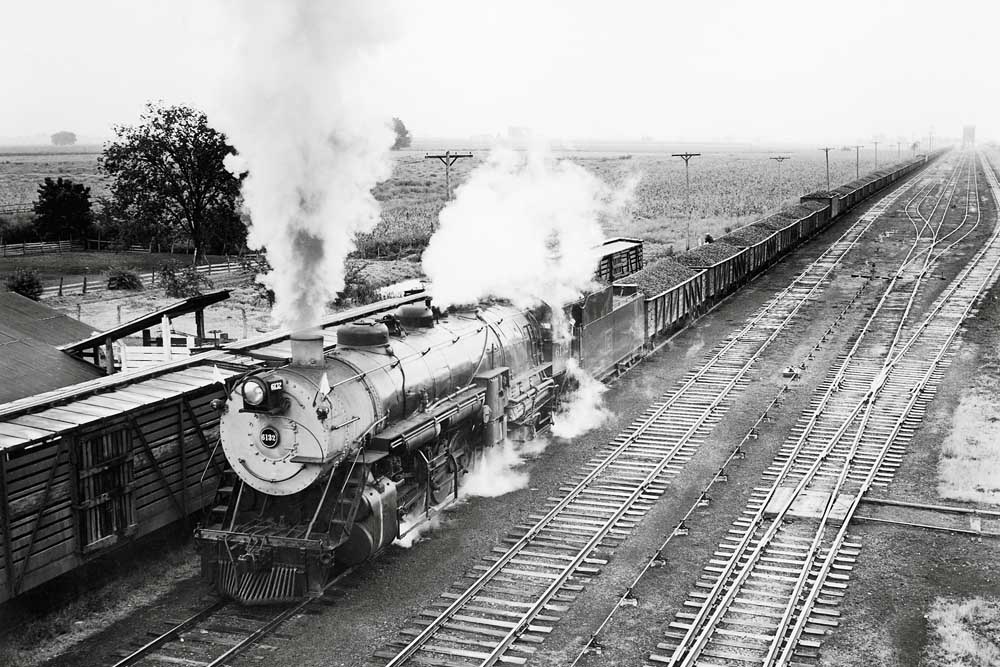
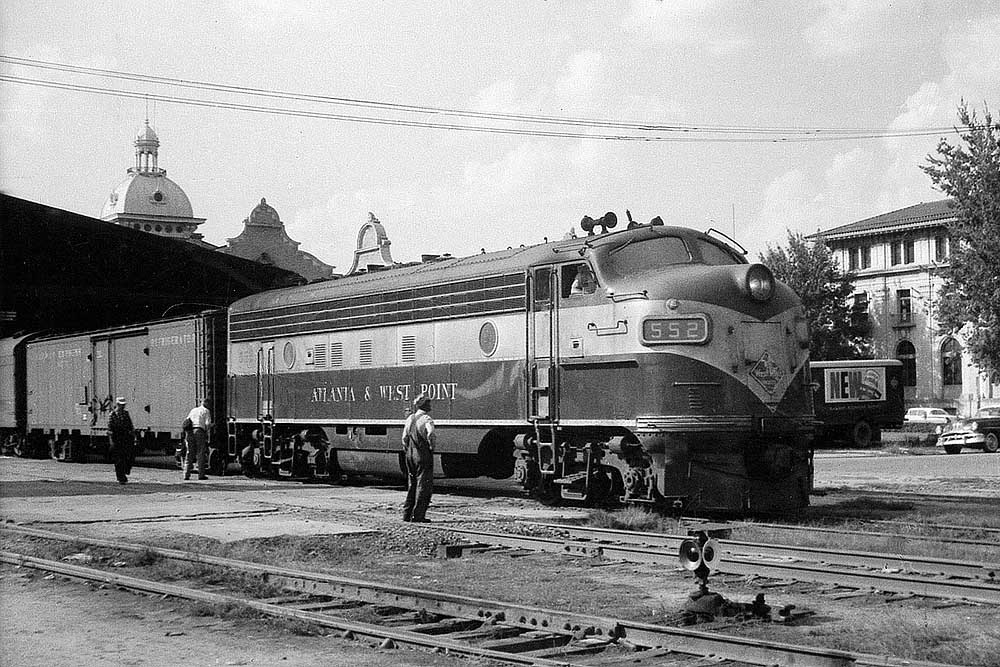
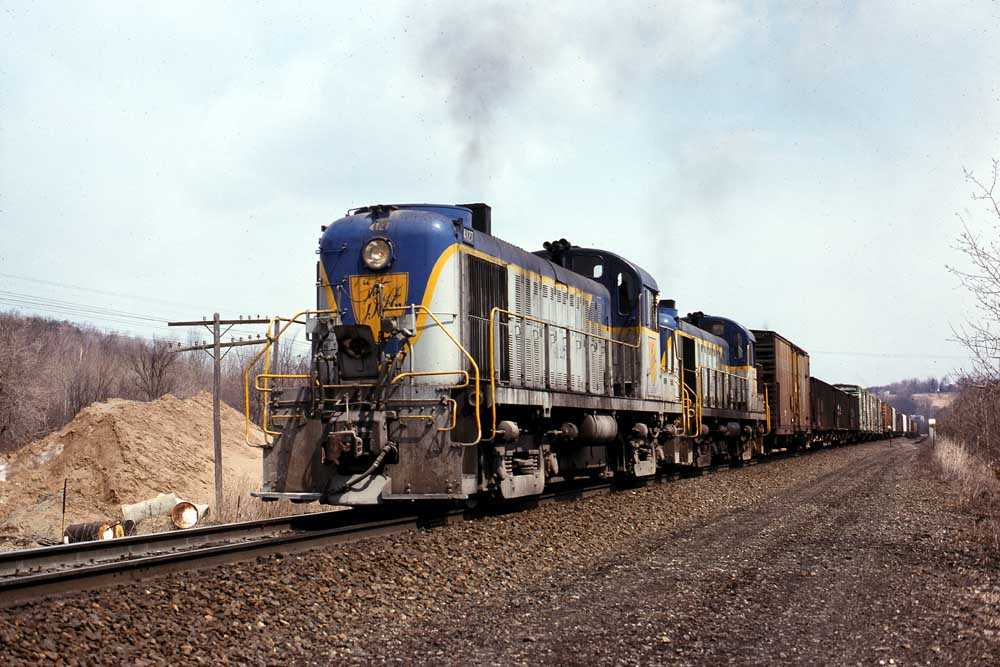




The former “C&P” or “D&I” double-track main from Chicago (Tower A5) to Savanna was nearly on-par w/action compared-to the double-track “C&M”/Twin Cities main. There were no-less than a half-dozen regular freight movements each way in-between the UP “Cities” varnish across N Illinois during the decade of the mid-1950’s through the mid-1960’s.
Essentially, there were three critical failures following emergence from the 2nd bankruptcy @ the end of WWII:
1. Failure to acquire the former Pacific Coast RR (originally the Columbia & Puget Sound Ry, Seattle’s first operating RR) in 1950. The then-GN met the asking price, which MILW’s executive regarded-as too high for the condition of the RR, and wound-up renting access from a competitor over some 21+ miles for its main line between Maple Valley and Black R. Jct., as-well-as an additional 8½ mi. from the latter to their Stacy St. yard SW-of downtown Seattle.
2. Failure to merge w/then-C&NW on three separate occasions from 1954 to 1968. That would have eliminated much redundant trackage in the upper Midwest (N Ill.-Wisc.-Mich.-Minn.-Iowa-So.Dak.), and provided the NorthWestern w/direct access to Puget Sound rather-than being entirely reliant on the good graces of the UP (which would absorb it in 1995). Generally, the C&NW did better overall in freight movements – on-average, cars took over a week to move-through MILW’s Menominee Valley yard complex that C&NW’s smaller Butler facility could handle in less than half the time.
3. Failure to re-invest for maintaining/upgrading the RR in a consistent manner. Creation of the CMC holding company in 1968 resulted-in re-investing the RR’s earnings in non-RR (albeit higher-profit) entities. CMC was always seeking a buyer for the RR, much like Hieneman’s NW Industries was for C&NW – which the latter did in 1973 by conveying the RR to its employees.
A new book is under-way that will detail the preceding, and include in-depth analyses of the facets contributing-to the RR’s demise during its last thirty-five years. Publication’s currently estimated to be w/in the next two years or so.
Another interesting read is “The Nation Pays Again : The Demise of The Milwaukee Road, 1928-1986” Thomas H Ploss.
Highlighting mismanagement and incompetence of the board that damaged the railroad Its easy to blame the extension than the unscrupulous actions of the board members
The Milwaukee Road’s mistake was not the Pacific Extension. It was what the board did after the extension. Read “The Investor Pays” by Max Lowenthal.
The MILW Road made many mistakes over the years. From building the Pacific Extension (the UP, NP, and GN had established traffic patterns), taking on the UP passenger trains and wasting money to improve the Chicago to Council Bluffs main line (mostly abandoned now), and not abandoning many branch lines in Minnesota and Iowa. Also, they purchased the bankrupt Chicago, Terre Haute Railroad. Their money ran out so the could not complete their electrification in the Pacific.
I think the MILW would had stayed independent longer if not for above.